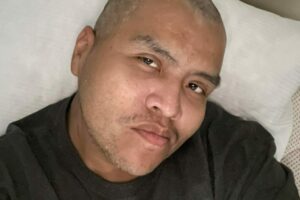In 1983, I began experiencing pain in my side, shortness of breath and coughing up blood. At the ER, I was diagnosed with pleurisy, which is inflammation of the tissues that line the lungs and chest cavity. I was only 17 years old. Two weeks later, I began having pain in my left groin and thought I pulled a muscle. A few days after that, I woke up with unbearable pain and swelling in my left calf. Doctors told me I had deep vein thrombosis. To me, this was a death sentence, as I had lost my mom to blood clots when I was 7 and she was 29, and her mom died at age 25 from clots.
They did a venogram (no doppler back then), and the clot ran from my ankle, up my thigh, to my groin, and they believe it went higher. I spent 22 days in the hospital, including two visits to the ICU for tPa therapy to attempt to dissolve the clots, before they finally discharged me. Weeks later, I was back at the ER with the symptoms I had at 17: pain upon breathing, coughing up blood, and shortness of breath. This time they accurately diagnosed me with bilateral pulmonary emboli.
In 1990, I was officially diagnosed with antithrombin III (ATIII) deficiency. However, in 2000, I saw a specialist researching clotting disorders, and this time I tested negative for ATIII deficiency. We know I have a hereditary clotting disorder, but I have tested negative for all known disorders. I was told many people with recurrent clotting issues likely have an inherited clotting disorders even if they test negative, because many just haven’t been discovered yet.
In August of 2021, I had a stroke. It occurred during the night while I was sleeping, and I didn’t realize it was happening. It affected the speech center of my brain. I knew my “speaking wasn’t working right,” as I explained to my children. My international normalized ratio (INR) – a blood test indicating how well the blood is able to clot – was too low. This time, the clot was in my right leg. I’ve been afraid of it happening again and am diligent about checking my INR now. The older I get, the scarier this gets.
In terms of risk factors, I have a family history of clots, plus I was on estrogen-based birth control. I’ve been dealing with this condition for almost 40 years, and not a lot has changed in how they treat it. This clotting experience has limited what I can do based upon the swelling and pain. After the stroke, it has caused more anxiety.
A clotting disorder is not a death sentence. Don’t let it stop you from living. Just adapt, adjust, and keep on.
Resources:
Understanding Thrombophilia
Antithrombin Deficiency Resources
Women and Blood Clots
The Psychological Impact of Blood Clots




